- Leicester Guildhall is Leicester’s oldest civic building and dates back to medieval times
- The building was threatened with demolition in 1876
- It is said that Shakespeare staged a theatrical performance at Leicester Guildhall
Leicester’s oldest civic building
A meeting place for the Guild of Corpus Christi
Leicester Guildhall dates back to medieval times and would have been a building of importance during the time of Richard III. The Great Hall, built in 1390, was a meeting place for the Guild of Corpus Christi, a select group of influential businessmen and gentry founded in 1343. This Guild was the richest in the town and a powerful force in medieval Leicester. The emblem of the Guild, the Host and Chalice, is featured in 15th century painted glass window fragments in the Mayor’s Parlour. The Guild had their own altar in the Church of St Martin (now Leicester Cathedral) and used the Great Hall for banquets at times of high festivals. Originally the Great Hall had a beaten earth floor which would have been laid with rushes and heated by an open hearth, with smoke rising to the roof. Leicester Guildhall in its present form incorporates a later Tudor extension to the original Great Hall.
Leicester’s first Town Hall
Many of the Guild’s members were associated with the Corporation of Leicester who began using Leicester Guildhall as a place of assembly from 1495. By 1563 the building belonged to the Town Corporation and had become Leicester’s first Town Hall with its west wing, including the Mayor’s Parlour, added in 1489. The painted panels in the Great Hall ceiling are from the 1600s and show the coat of arms of the Borough and the arms of the Hastings family. Over the Hastings coat of arms is a painted quotation reminding courts and corporations that “God shall bring every work into judgement”.
A place for entertainment, feasting and learning
Over the centuries, Leicester Guildhall has had many different uses. In the 16th and 17th Centuries, as well as being used for civic business, the Quarter Sessions were held there and public meetings, civic dinners, concerts and dramatic entertainment were hosted. There is a tradition that William Shakespeare was a member of one of the theatre companies that performed within its walls. In 1588 it is recorded that the Mayor used Leicester Guildhall for a feast to celebrate the defeat of the Spanish Armada. Arms and armour were kept in the building at this time in readiness for possible invasion.
In 1632 the Town Library was moved into Leicester Guildhall from the bell tower of nearby St. Martin’s church. It is the third oldest public library in the country. The library rooms were originally quarters for the chantry priests of the Corpus Christi guild. Volumes in the library include the Codex Leicestrensis, an important manuscript of the New Testament in Greek dating to the 1400s, a Latin grammar of 1592 with the signature of Ben Jonson (the playwright and contemporary of Shakespeare), a copy of William Harvey’s 1639 classic work on the circulation of blood: De Motu Cordis et Sanguinis and a New Testament in an American Indian language intended for missionary work in New England.
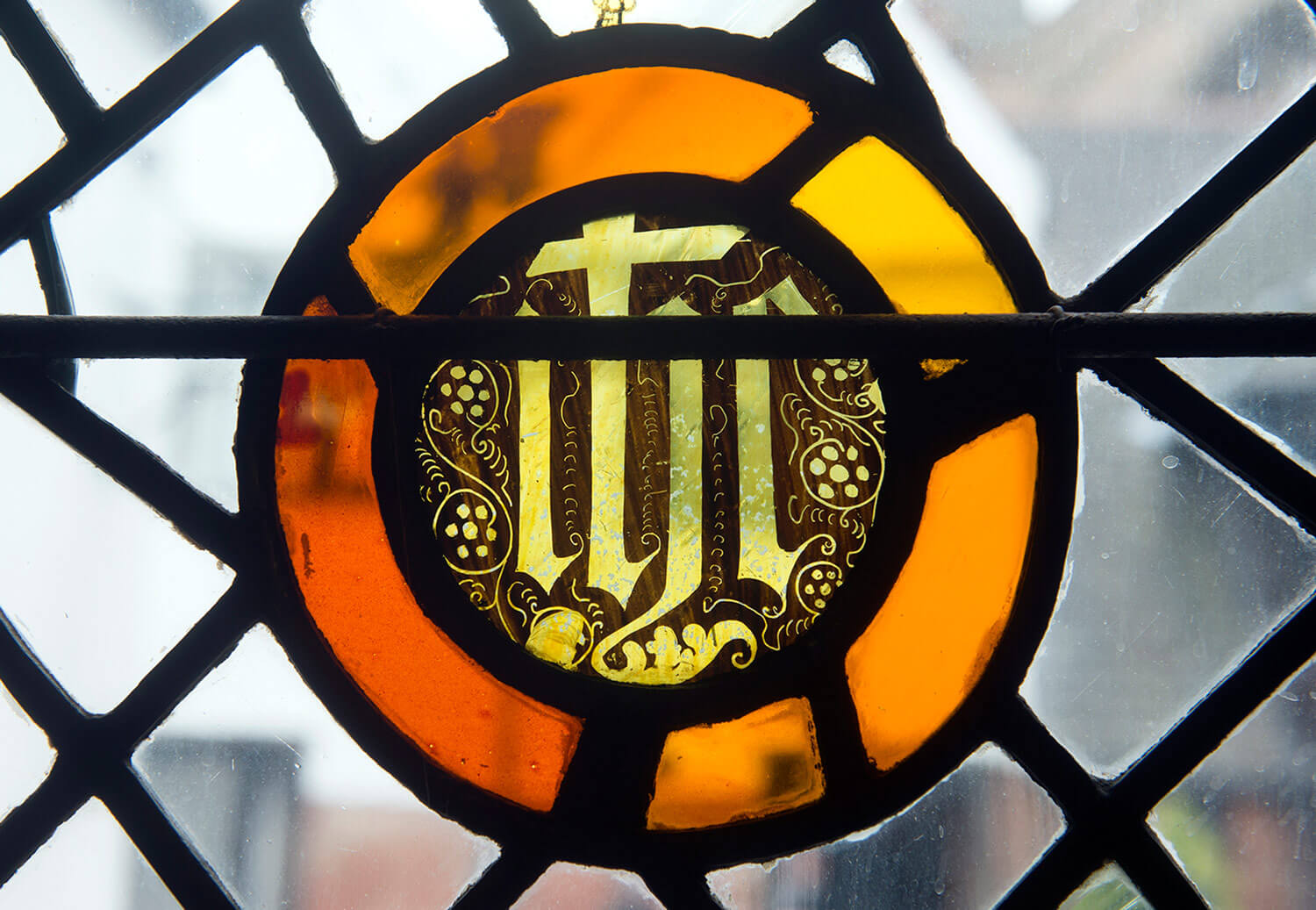
The Mayor’s Parlour
The elaborate decorative features in the Mayor’s Parlour date from the early 17th Century. The panelling and overmantle were added in 1637 and Richard Inge, the then Mayor, gave the Mayor’s chair with the arms of Charles I above.
The Siege of Leicester
During the English Civil War the Mayor and Corporation met at Leicester Guildhall to make their key decisions, including how to respond to royalist demands for money. Prince Rupert eventually attacked the town on 30th May 1645 and breached its walls. The last stand made by the defenders was outside Leicester Guildhall and St Martins. The Royalists then entered Leicester Guildhall and looted the town’s archives, mace and seal. Within a few weeks the Royalists had been defeated at the Battle of Naseby and Oliver Cromwell advanced on Leicester. The Royalists surrendered and a thanksgiving dinner was arranged at Leicester Guildhall to celebrate Cromwell’s victory.
Leicester outgrows its Town Hall
From the later 1700s, Leicester was a larger and more important town. The Municipal Reform Act of 1835 was passed and ratepayers voted in a new council including local trades-people such as hosiers, grocers, drapers, spinners and bankers. The reformed Corporation came to power on 1st January 1836 and at once held an auction in the Great Hall to dispose of the civic silver and china including the Great Mace, the ceremonial trappings of an earlier age. By now the medieval Leicester Guildhall had become hopelessly inadequate for a rapidly growing 19th century town and so a new Town Hall was built in 1876. Leicester Guildhall had a variety of uses after this time including as a domestic science school for girls with cooking lessons taking place in the Great Hall.
A threat of demolition
With its main civic purpose gone, Leicester Guildhall became neglected. Townspeople considered it old-fashioned and gloomy and it was under threat of demolition in 1876. Fortunately the newly-created City Council embarked on a major renovation programme in 1922, spearheaded by the Leicester Archaeological Society. Leicester Guildhall was reopened to the public in 1926 and today, as one of the city’s most important medieval buildings and an iconic local landmark, enjoys protection as a Grade I listed building.
Leicester Guildhall is open daily.
Gallery

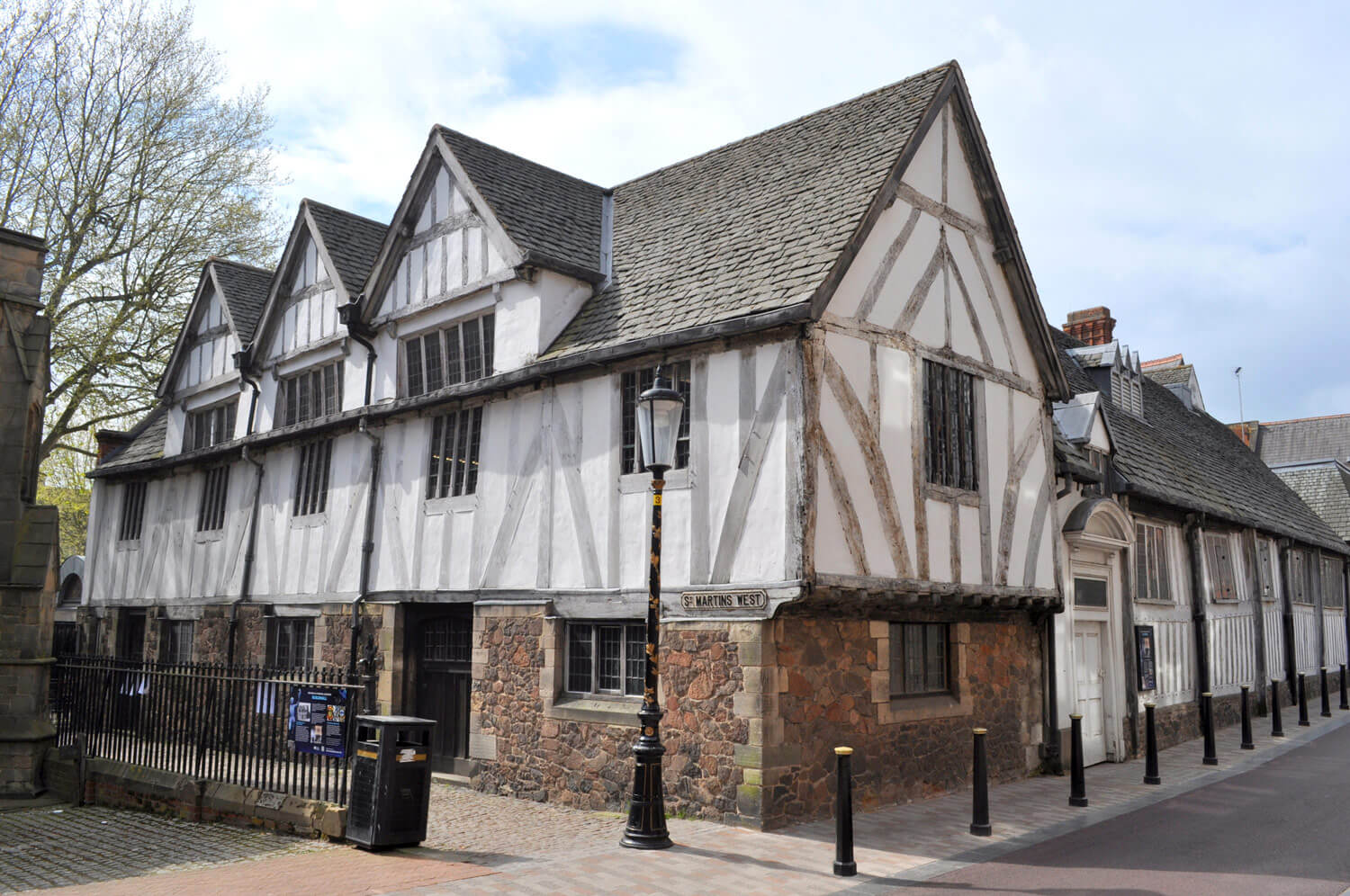

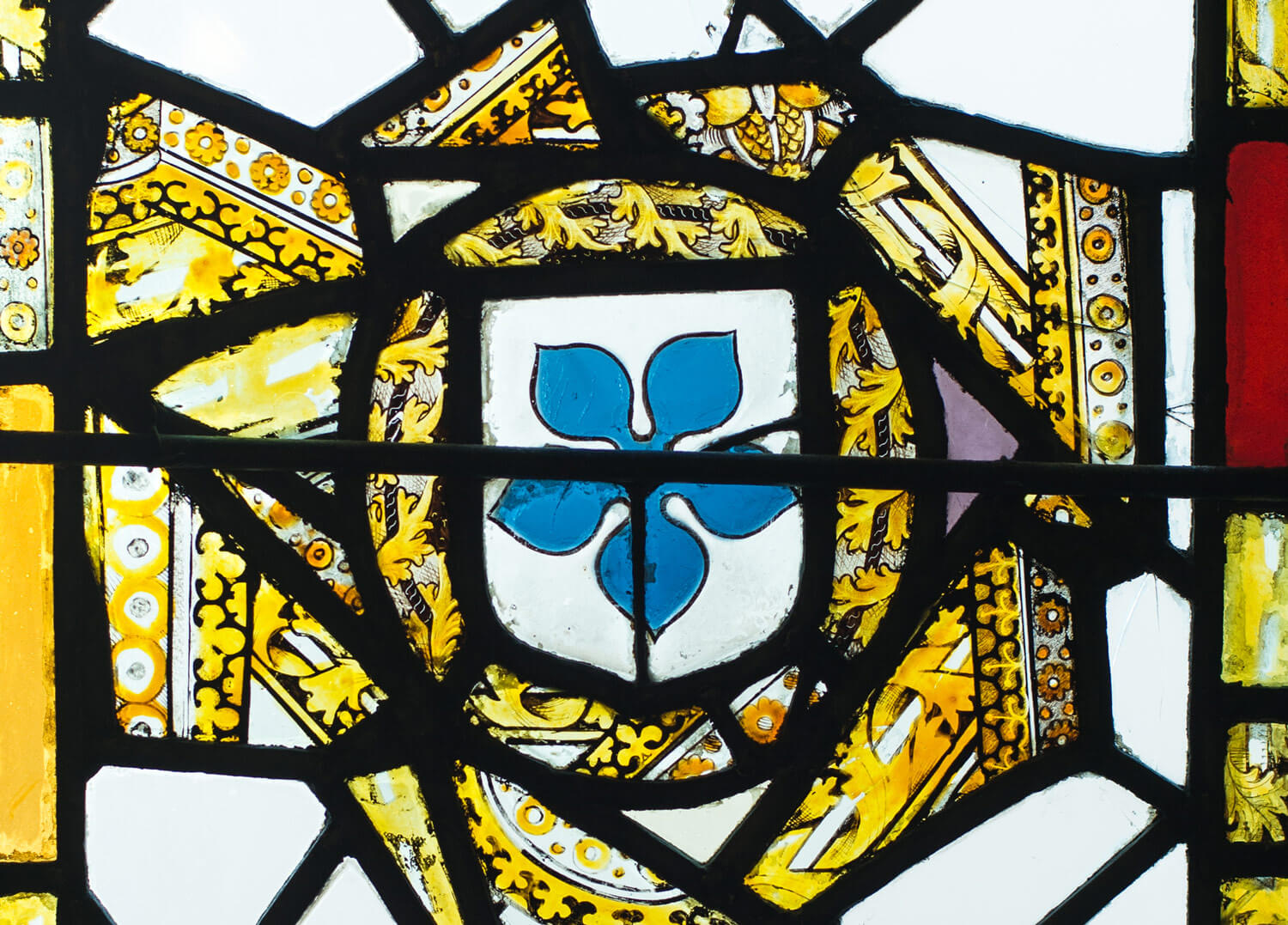
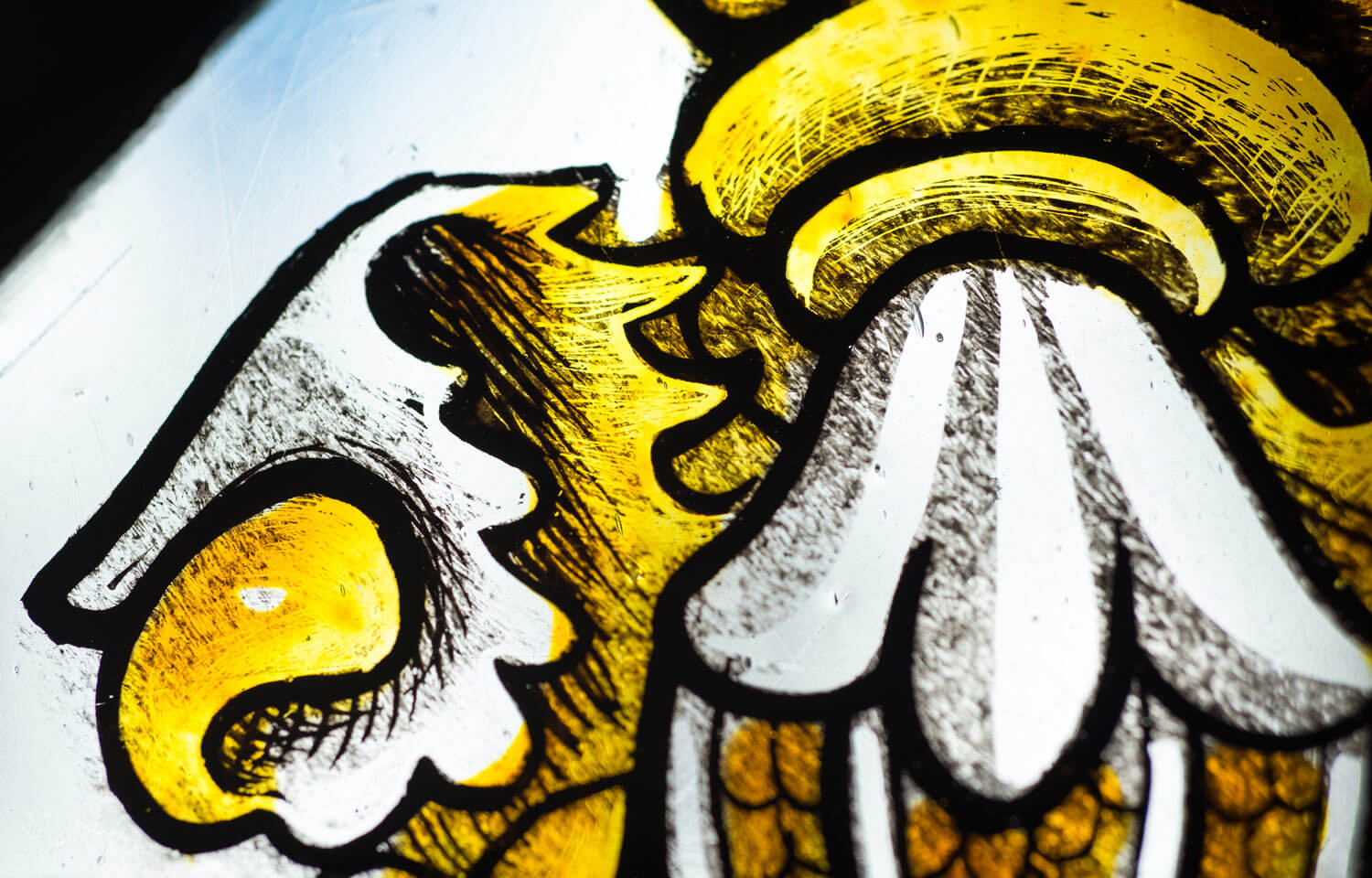
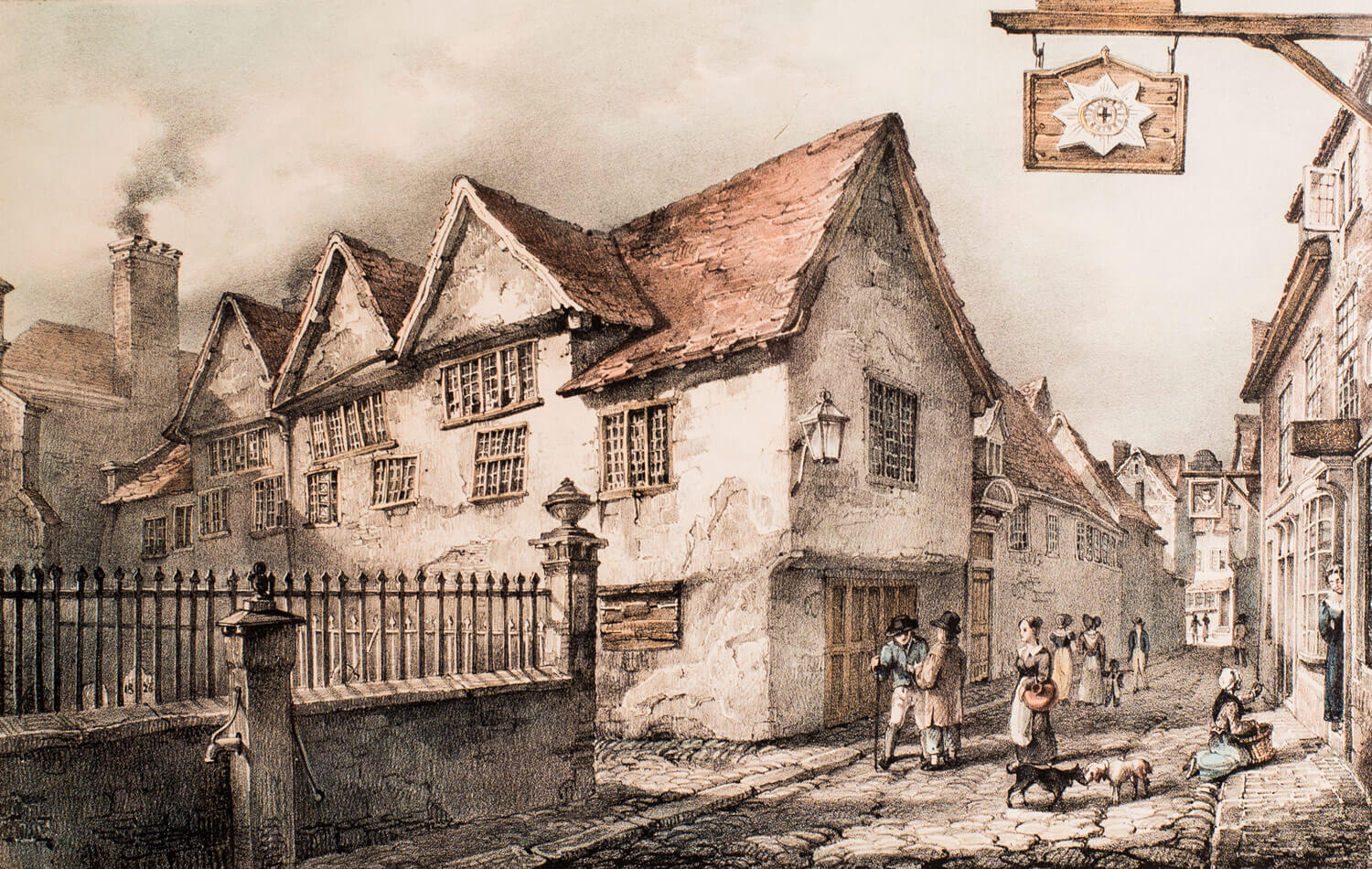
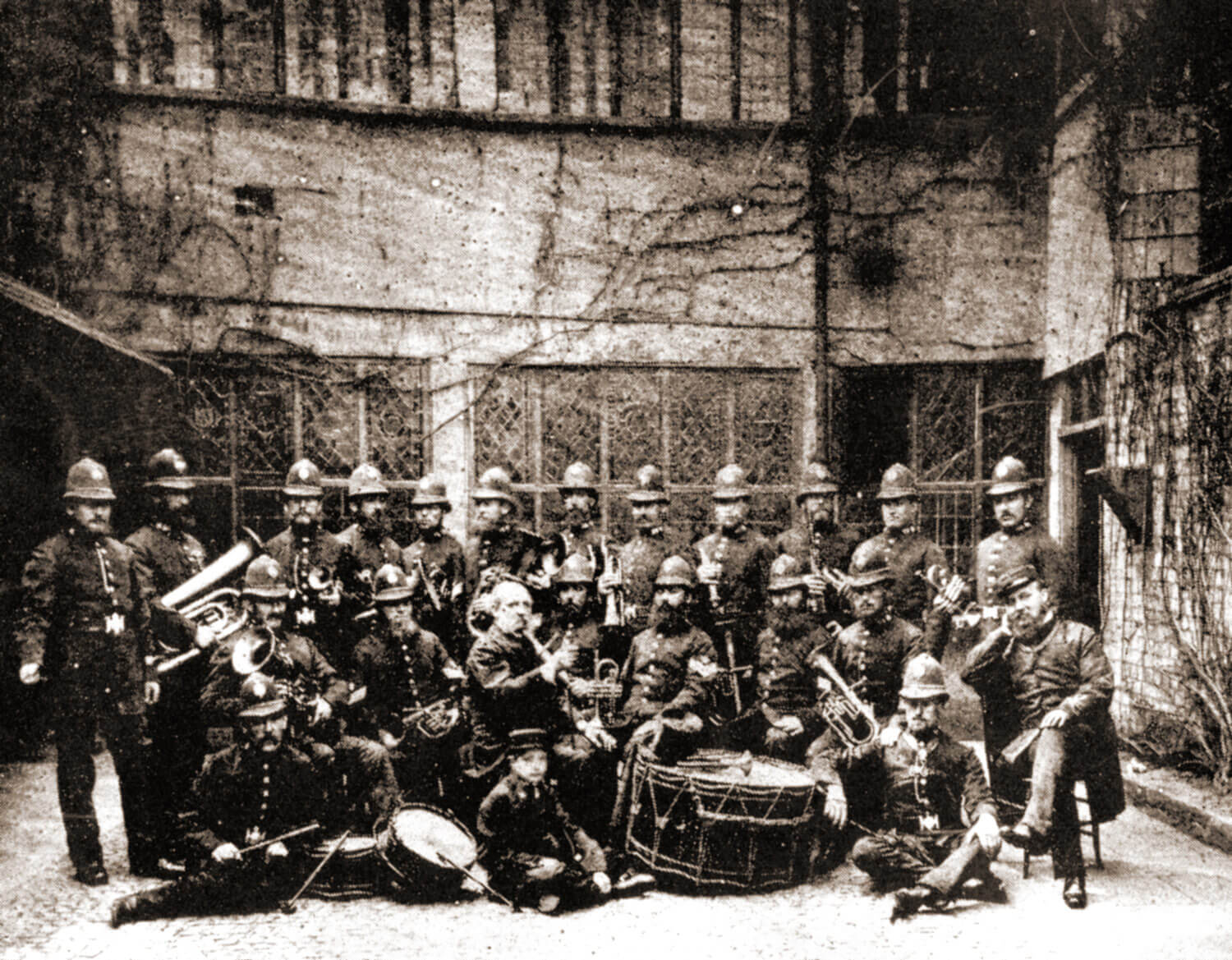
Roman Leicester
(47- 500) A military fort was erected, attracting traders and a growing civilian community to Leicester (known as Ratae Corieltauvorum to the Romans). The town steadily grew throughout the reign of the Romans.
Medieval Leicester
(500 – 1500) The early years of this period was one of unrest with Saxon, Danes and Norman invaders having their influences over the town. Later, of course, came Richard III and the final battle of the Wars of the Roses was fought on Leicester’s doorstep.
-
The Castle Motte1068

-
Leicester Cathedral1086

-
St Mary de Castro1107

-
Leicester Abbey1138

-
Leicester Castle1150

-
Grey Friars1231

-
The Streets of Medieval Leicester1265

-
Leicester Market1298

-
Trinity Hospital and Chapel1330

-
Bow Bridgecirca 1350

-
Church of the Annunciation1353

-
John O’Gaunt’s Cellar1361

-
St John's Stone1381

-
Leicester Guildhall1390

-
The Magazine1400

-
The Blue Boar Inn1400

-
The High Cross1577

Tudor & Stuart Leicester
(1500 – 1700) The wool trade flourished in Leicester with one local, a former mayor named William Wigston, making his fortune. During the English Civil War a bloody battle was fought as the forces of King Charles I laid siege to the town.
Georgian Leicester
(1700 – 1837) The knitting industry had really stared to take hold and Leicester was fast becoming the main centre of hosiery manufacture in Britain. This new prosperity was reflected throughout the town with broader, paved streets lined with elegant brick buildings and genteel residences.
-
Great Meeting Unitarian Chapel1708

-
The Globe1720

-
17 Friar Lane1759

-
Black Annis and Dane Hills1764

-
Leicester Royal Infirmary1771

-
New Walk1785

-
Freemasons’ Hall1790

-
Gaols in the City1791

-
Friars Mill1794

-
City Rooms1800

-
Development of Highfields1800

-
Wesleyan Chapel1815

-
20 Glebe Street1820

-
Charles Street Baptist Chapel1830

-
Glenfield Tunnel1832

-
James Cook1832

Victorian Leicester
(1837 – 1901) The industrial revolution had a huge effect on Leicester resulting in the population growing from 40,000 to 212,000 during this period. Many of Leicester's most iconic buildings were erected during this time as wealthy Victorians made their mark on the town.
-
Leicester Union Workhouse1839

-
Campbell Street and London Road Railway Stations1840

-
The Vulcan Works1842

-
Belvoir Street Chapel1845

-
Welford Road Cemetery1849

-
Leicester Museum & Art Gallery1849

-
King Street1850

-
Cook’s Temperance Hall & Hotel1853

-
Amos Sherriff1856

-
Weighbridge Toll Collector’s House1860

-
4 Belmont Villas1862

-
Top Hat Terrace1864

-
Corah and Sons - St Margaret's Works1865

-
Kirby & West Dairy1865

-
The Clock Tower1868

-
Wimbledon Works1870

-
The Leicestershire Banking Company1871

-
St Mark’s Church and School1872

-
Victorian Turkish Baths1872

-
The Town Hall1876

-
Central Fire Stations1876

-
Aylestone Road Gas Works and Gas Museum1879

-
Gas Workers Cottages1879

-
Leicestershire County Cricket Club1879

-
Welford Road Tigers Rugby Club1880

-
Secular Hall1881

-
Development of Highfields1800

-
Abbey Park1881

-
Abbey Park Buildings1881

-
Victoria Park and Lutyens War Memorial1883

-
Leicester Fosse FC 18841884

-
Leicester Coffee and Cocoa Company Coffee Houses1885

-
St Barnabas Church and Vicarage1886

-
Abbey Pumping Station1891

-
Luke Turner & Co. Ltd.1893

-
West Bridge Station1893

-
Thomas Cook Building1894

-
The White House1896

-
Alexandra House1897

-
Leicester Boys Club1897

-
Grand Hotel and General Newsroom1898

-
Highfield Street Synagogue1898

-
Western Park1899

-
Asfordby Street Police Station1899

-
Leicester Central Railway Station1899

Edwardian Leicester
(1901 – 1910) Electric trams came to the streets of Leicester and increased literacy among the citizens led to many becoming politicised. The famous 1905 ‘March of the Unemployed to London’ left from Leicester market when 30,000 people came to witness the historic event.
-
YMCA Building1900

-
The Palace Theatre1901

-
Pares's Bank1901

-
Coronation Buildings1902

-
Halfords1902

-
High Street1904

-
George Biddles and Leicester's Boxing Heritage1904

-
Municipal Library1905

-
Leicester Boys Club1897

-
The Marquis Wellington1907

-
Guild Hall Colton Street1909

-
Women's Social and Political Union Shop1910

-
Turkey Café1901

Early 20th Century Leicester
(1910 – 1973) The diverse industrial base meant Leicester was able to cope with the economic challenges of the 1920s and 1930s. New light engineering businesses, such as typewriter and scientific instrument making, complemented the more traditional industries of hosiery and footwear manufacturing.
-
Dryad Handicrafts1912

-
De Montfort Hall1913

-
Leicester During the First World War1914

-
Fox’s Glacier Mints1918

-
Statue of Liberty1919

-
Housing in Saffron Lane1924

-
Winstanley House1925

-
Housing in North Braunstone1926

-
Lancaster Road Fire Station1927

-
The Little Theatre1930

-
Saffron Hill Cemetery1931

-
Braunstone Hall Junior School1932

-
Former City Police Headquarters1933

-
Savoy Cinema1937

-
Eliane Sophie Plewman1937
-
City Hall1938

-
Athena - The Odeon Cinema1938

-
The Blitz in Highfields1940

-
Freeman, Hardy and Willis - Leicester Blitz1940

-
Leicester Airport1942

-
Leicester’s Windrush Generations1948

-
Netherhall Estate1950
-
Housing at Eyres Monsell1951

-
Silver Street and The Lanes1960

-
Bostik1960

-
Auto-Magic Car Park (Lee Circle)1961

-
University of Leicester Engineering Building1963

-
Sue Townsend Theatre1963

-
Central Mosque1968

-
Belgrave Flyover1973

Modern Leicester
(1973 – present day) Industry was still thriving in the city during the 1970s, with the work opportunities attracting many immigrants from all over the world. While industry has declined in recent years, excellent transport links have made Leicester an attractive centre for many businesses. The City now has much to be proud of including its sporting achievements and the richness of its cultural heritage and diversity.
-
Haymarket Theatre1973

-
The Golden Mile1974

-
Acting Up Against AIDS1976

-
Belgrave Neighbourhood Centre1977

-
Diwali in Leicester1983

-
Leicester Caribbean Carnival1985

-
Samworth Brothers1986

-
Jain Centre1988

-
Guru Nanak Dev Ji Gurdwara1989

-
King Power Stadium2002

-
LCB Depot2004

-
Curve2008

-
BAPS Shri Swaminarayan Mandir2011

-
Makers Yard2012

- Roman Leicester
- Medieval Leicester
- Tudor & Stuart Leicester
- Georgian Leicester
- Victorian Leicester
- Edwardian Leicester
- Early 20th Century Leicester
- Modern Leicester
Civic Affairs















































































































































